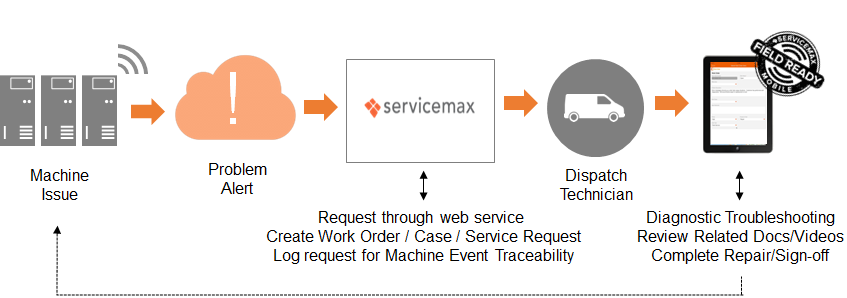How It Works
Machine-initiated service requests come from your installed assets that have been equipped with IoT e-enabled sensors. This information is used to provide embedded mashups of machine data to both the service center and the field technician. The following figure illustrates the flow.

1. Sensors on the connected machines or assets read the key indicators on the machines. When the configured threshold is reached, an alert is sent to its IoT platform.
2. The integration between the IoT platform and ServiceMax comes into play. The alert data coming from the machine is translated to a web service call to ServiceMax, and is automatically converted into a case, service request, or work order in ServiceMax. Additionally, the incoming alert and the status of the corresponding record creation are tracked for analytics. This helps in providing machine event traceability.
3. ServiceMax's field-service capabilities ensure that the service request or work order is attended to as per the defined business processes.
4. The alert data can contain advanced information such as the machine's location, embedded mashups of real-time sensor data, and be included in the service request / work order. This helps technicians diagnose and rectify the issue faster.
5. When on-site, the technician has access to machine location data, sensor data, diagnostic data, and repair data through the Installed Base view running on the ServiceMax Mobile apps.
This section describes one of the delivery flows.

Based on your configuration, the remote machine / asset invokes the related ServiceMax event, creating requisite service-request records in ServiceMax. These records are then processed as per your business process configurations in ServiceMax, and technician is dispatched for fixing the issue reported. Additionally for standard ServiceMax IoT events, the event request and status of the record creation are registered for machine event traceability and further analytics.